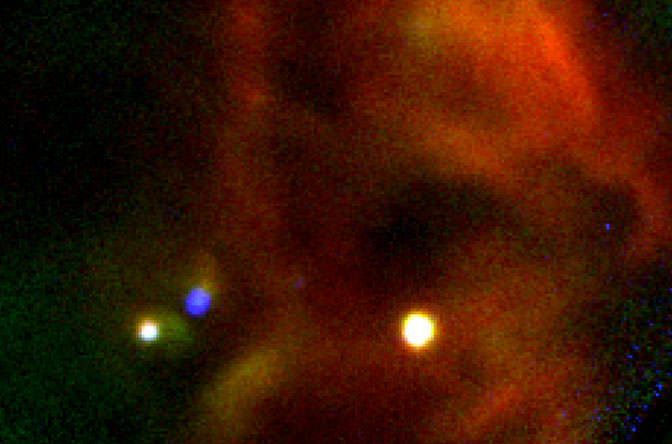Cornell: CU telescope debuts on NASA's SOFIA
Posted: Tue May 25, 2010 1:35 am
NASA's airborne observatory prepares for debut flight featuring Cornell-made instrument
Cornell University - 24 May 2010
Cornell University - 24 May 2010
Cornell University - 24 May 2010
The story behind SOFIA -- 13 years in the makingWhen the first photons meet the 2.7-meter telescope aboard SOFIA, the Stratospheric Observatory for Infrared Astronomy, in flight May 25, it will be the long-awaited result of more than 13 years of work by hundreds of scientists and engineers around the world.
It will also be the beginning of a new era in astronomy, scientists say. And it will be a particularly sweet moment for Cornell professor of astronomy Terry Herter, leader of the team that designed and built FORCAST (the Faint Object InfraRed Camera for the SOFIA Telescope), the first instrument to fly on the observatory.
SOFIA, a modified Boeing 747SP fitted with a German-built telescope that measures radiation primarily in the infrared, is about to begin what researchers hope will be some 20 years of observing the universe. The mission is a joint program by NASA and the German Aerospace Center.
With an evolving variety of instruments that can be changed and updated as technology progresses over the years, the observatory could help answer questions about planet and star formation, the composition of nearby galaxies and the center of our own galaxy, features of the interstellar medium and the planets of our solar system.
The observatory combines the advantages of space-based telescopes like the Spitzer Space Telescope and the Hubbell Space Telescope with the benefits of ground-based observatories ... Flying at 35,000-45,000 feet, it will allow researchers to see phenomena that are obscured from the ground by atmospheric water vapor. But because it returns to the ground, researchers can change instruments and make adjustments and modifications that would be impossible with a space telescope ... SOFIA is also mobile -- it can travel to different places around the world to observe transient events.
To keep it stable in flight, the telescope is suspended over a giant spherical bearing -- similar to how a puck is suspended over an air hockey table. Small torquer motors use magnetic fields to keep the telescope centered.
Five instruments are ready for use on SOFIA (one at a time), with many more in the pipeline. First in line is FORCAST, an infrared camera that can take 100 images per second, making it ideally suited for characterizing the telescope on its initial flights. On the debut six-hour flight, FORCAST will also measure the thermal emission from the telescope itself -- vital information for every instrument to follow -- and take infrared photos of test targets in the sky.
Cornell University - 24 May 2010
The SOFIA project has been in the making for more than 13 years -- but the airplane has an even longer history. Originally owned by Pan Am, the 747SP (Special Performance) was named the Clipper Lindbergh and christened by Anne Morrow Lindbergh in 1977 on the 50th anniversary of Lindbergh's flight across the Atlantic.
The Boeing 747SP differs from a modern 747 in a few ways. Most notably, it's 45 feet shorter and, thus, lighter -- which allowed it to make long transoceanic flights without stopping to refuel. (Modern 747s have much more efficient engines.)
...
Since NASA bought the Clipper Lindbergh in 1997, SOFIA has undergone more than a few changes. Among many other things, it has a 16-by-23-foot door cut into the port side for the telescope and a bump near the rear of the plane that smoothes out airflow around the fuselage when the telescope door is open.
...
Inside, the plane has a few remnants of its past: several original seats; the spiral staircase to the upper deck; an array of analog instruments in the cockpit. But most of the seats are a hodgepodge of military airplane seats at workstations, facing backward toward the massive, 17-ton telescope and instruments.
The cabin also includes an area for educators and reporters who will take part in flights as part of the mission's effort to educate and engage the public. And the telescope itself is part of a pressure bulkhead that allows the main cabin to stay pressurized despite the open door behind it.
Despite its novelty, SOFIA follows a long history of airborne astronomy that started with observations made from biplanes in the 1920s and '30s. Most recently, NASA's Kuiper Airborne Observatory, a modified Lockheed C-141 with a 1-meter infrared telescope that operated 1974-95, was the vehicle for discoveries including the rings around Uranus, the atmosphere around Pluto and the presence of water vapor in the interstellar medium.









